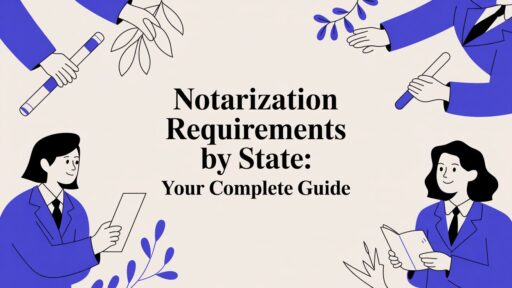The trust area is something that may seem difficult to manage, especially in unloading the property part. A lot of term themselves the question of whether it is realistic to put a property into a trust and then take it out. It is a matter that may be both straightforward and difficult as it all depends on what the trust and the property are like.
This article is here to guide you through this subject, and it will provide you with the best information available to make the process clearer and more understandable. You will figure out some of the legal issues involved in this process and will get a background of the matters that might cause you to have interruptions in the process of property removal from a trust. Nevertheless, you will be properly informed about what will help you have a better understanding of the process if you are a trustee, a trust settlor, or just someone who is interested in the topic of estate planning.
Introduction to Trusts
Lurking inside the mystery of trusts is the very nature of their creation and use. Allow us to be your guide in uncovering the story of trusts, taking you first through an abstract explanation then walking through all the different kinds.
The Theory of Trusts
Trust, in the context of the law, is a type of an agreement between a trustee, who is a party having the assets, and a beneficiary, who is a person on whose behalf these assets are held by the trustee. The donor is the one who comes up with the plan and sets the trust and, in addition, determines who can manage it and how the distribution of assets will be done according to the rules that will be agreed upon by the parties involved. For example, parents can make a trust for their children, naming a lawyer as the trustee. In that case, the kids will get the possession of the estate once they attain a certain age threshold through this legal consultation.
Trust Types
Trusts are available in several types, each of which is well-suited to different circumstances and needs. There are the following four primary types of trusts:
- Revocable Trusts: This type of trust is famous as a living trust as the settlor has the power to alter or even cancel the trust during his lifetime. Thus, we can give a practical case of a person who undertakes to restructure the trust so that the property they just bought will be included.
- Irrevocable Trusts: The trust with this designation is unalterable once established until the beneficiary’s permission is given. For example, a wealthy businessman can set up an irrevocable trust so that his estate will be left to the charity of his choice.
- Asset Protection Trusts: The trust of this sort is conceived in such a way so as to protect the assets from the grab of the creditors. A good example is a real estate magnate who would thus defend his property investments when using such a trust.
- Charitable Trusts: These special trusts are set up to make a gift of funds to the designated charitable organization and at the same time be eligible for tax relief. A lover of the arts, for example, may utilize such a trust to alienate his art collection to the museum.
The observance of the character and types of trusts explains how a person may deal with and get benefits of a trust in a more knowing way than those who rely on instincts only.
What Is a Property Trust?
Progressing on this coherent issue, the next step would be to have a detailed look at the property trust to get a fuller picture of what the process consists of and the possible ways of asset extraction from it.
Property Trust Definition
Property trust is a term related to a distinct kind of trust which
Real property or referred to as real estate refers to the asset that is held in behalf of another person. Trust lang allows for the definition of three main roles, being the settlor, the one who establishes the trust, the trustee, the one who will manage the assets and the beneficiary, the one who enjoys the benefits of the trust. In a property trust situation, the trustee of the trust is said to be holding the legal title to the property whereas the beneficiary, who is the owner, harvests the fruit, that is, he receives the rental income or net sales.
Reasons for Taking Property into Trust
Carrying out the placing of properties in a trust has a number of advantages. The creation of a long-term asset protection layer is a major factor, as it provides a legal layer of protection against external creditors or legal judgements. In addition, the privacy aspect and probate saving too are features of a trust, where the transfer of the property from the deceased person to their heirs happens directly and privately, without any need for the probate court. Moreover, trust can also provide tax…reasons for establishing property trusts.
Can You Take a Property Out of a Trust?
Removing a property from a trust may have a lot of angles to be considered since the process is complex and many legal, tax, and potential implications are involved. This article will illuminate that part of those issues.
The Legal Perspective
The word “property” here does not indicate a certain property; this means that the transfer of property is not done in a random manner, but it is a chain of procedures which is processed by the dictates of the government such as…legal procedures. The primary actor, who is the legal owner, has the exclusive power to effectuate the activity of moving assets from the trust, provided that the nature of the trust allows the move. Thus, for instance, revocable trusts give the settlor the power to vary the trust and to withdraw assets, provided the trustee agrees. On the contrary, irrevocable trusts do not allow the settlor to make changes without the consent of the beneficiary.
The second part of the process is the &Quot;trust document&Quot; factor. This legal writing, first written by the trustor, lists the needed instructions for the trustee, thereby setting forth restrictions and giving consent. Here you can find the clause that deals with the removal of assets; otherwise, it is the local trust law that takes precedence.
The third activity that holds a great significance in asset removal from the trust is the title deeds. Indeed, the filing of this deed by the trust leads to the removal of the property, which is usually done with the help of an attorney to ensure correct performance.
To conclude, it is worth mentioning that the participation of the court can be of different intensity from case to case, especially when restive or complex trustee-beneficiary relationships make the court make a quick entry.
Possible Scenarios and Consequences
A great many scenarios can be the result of removing property from a trust. Each of the scenarios comes with its own result. A case in point is the prospect that the process of taking property out of the trust can involve sudden tax drawbacks, particularly in the situation when tax shields were offered by the trust. The decisions that the trustees make can lead to the beneficiaries or even”>origination of a third party, including a bill of sale notarized by a notary public, might be required to evidence the asset transfer and confirm the decisions of the trustor, the trustee, and the beneficiaries.
If a settlor has a revocable trust, this trust can be terminated due to a set of conditions stated in the trust instrument, even without a grantor’s will. At the same time, irrevocable trusts cannot be abolished without a good cause that substantiates the beneficiaries’ benefits. Moreover, the appropriate paperwork, such as a notary title transfer in escrow transactions, is an added requirement to safeguard the credibility of the trustor, the trustee, and the beneficiaries.
Subsequently, every trust owner should exercise their full rights in the trust and thus, every person involved needs to be notified of the decision to remove the trust prope
Deed registration, complemented by the relevant documents such as the title deeds, is required to change ownership of an immovable asset, and this is the work that has to be done by the new owner most whence the old owner will switch over- This is still essential for the full understanding of the trust document and especially the trust type that is the main guide to property removal.
- Find Out the Kind of Trust: Understand that the trust referred to is either revocable or irrevocable. The categorization is essential to know who may remove assets
- Check the Trust Agreement: Go over the trust agreement to find clauses that talk of property withdrawal.
- Get the Necessary Approvals: If these are conditions, ask for an okay from the trustee( if revocable) or major stakeholders of the trust in case it is irrevocable.
- Put Together Legal Papers: Do the filling of an NH form, for instance, a deed that completely transfers property title as well as conform to the rules, policies, and regulations governing ownership of real estate property in the community.
- Submit the Documents Needed: Deliver the forms that you have filled to the designated place; the usual place is the country registrar’s office.
- Consult with Professionals: Please seek professional help, i.e., attorneys or financial advisors, to act as your guide through the whole process to have all legal formalities accomplished.
No one method such as the above-mentioned step-by-step procedure ensures a smooth property wrest from a trust, but the mentioned process steps greatly give light to the necessary steps entailed in the process. It is the ever-increasing intricacy in trust handling that makes certain professional advice becomes a necessity if one is to do the steps in the right way and by following the law.
The Consequences of Withdrawing Assets from a Trust
Delving deeper into the effects of extracting a property from a trust, there are multiple implications affecting quite a few areas throughout this process. These are mostly in and around the trust’s good condition, and the consequent tax liability issues.
On The Trust Itself
When a property is taken out of a trust, the trust effectively undergoes major changes. The trust balance becomes disordered, especially when the property of the trust is the one that has disappeared. The situation can invoke the sympathy of or cause monetary loss to other assets in the trust and will accordingly have direct and immediate repercussions for the beneficiaries. For instance, those who have lived with the belief that they are getting some property as inheritance may not realize their dream, hence may be found grumbling over it. Nevertheless, the trust’s decision to separate the property from it is also a major factor in making the property subject to the external liabilities which will jeopardize the property and let the creditors or legal proceedings take it away.
On The Tax Liabilities
Tax considerations play a major role in dealing with the possession of the property out of a trust. Taxation issues are definitely the core part that the removal of the property from a trust entails. If we are to use layman’s language, removing a property from a trust would carry along some tax responsibilities. In case of a situation where the property has grown in value after the transfer to the trust, the prospect of capital gains tax emerges. An instance illustrating the point can be seen when a house is valued at $200,000 upon being put into the trust and then afterward it increases its value to $300,000, this will definitely have some tax consequences on the $100,000 obtained as profit. The best approach for future taxes is the new ownership that is put in place with the removal of the property. Furthermore, a tax professional who can provide all the options and guide in decision-making is needed for people to completely comprehend the complexities of these tax matters.
Consultation and Legal Advice
Disentangling property from a trust, with all the complications involved, is a clear indicator of the need for professional legal direction. This particular part defines both when and where to seek the help of the legal adviser and still be trust-friendly.
When to Consult a Lawyer
Especially when dealing with property transfer, the entire process of trust is often tricky and demands the application of a lot of law aspects. In such kind of situation, consulting a lawyer is essential. For example, when a settlor is initiating the creation of a trust, the help of a legal advisor in drawing a watertight trust document is unavoidable. A trust instrument contains the trust rules, i.e. the issues such as the right to terminate or add things, which can be done with or without the beneficiary’s participation and if necessary, a court’s permission. If the trustee intends to transfer property within the trust, it is necessary that a lawyer involved to offer a suitable solution. It is not easy to transfer assets from trusts, particularly irrevocable ones, as possible beneficiaries’ approval is needed or a court decision required. If a matter of a dispute arises because of a trust a lawsuit that have being filed against the trust, such as claim by the beneficiaries or the inclusion of such a claim by the external creditors, it’s important to have a trust lawyer. The legal professionals on the case will make sure all the entities …
Finding Trust-friendly Legal Advice
One of the most important things to remember while searching for legal help on your trust issue is to engage with a trust-friendly lawyer. Having a wealth of experience and acquaintance with the legal characteristics of trusts, these legal counsels are powerful partners in the quest for a peaceful distribution of your estates and tax-efficient transfer of funds among the loved ones of the deceased.
Examine the virtues of the lawyer in addition to their longevity in the business and the recommendations they have received. Lawyers who boast years after years of involvement with trust matters undoubtedly come with the plus of specializing in more than one facet of trust law. E.g., those versatile professionals dealing with the so-called living and dead trusts can supply various considerations each way. Great feedback should emanate from the lawyer’s past successes in legal representations which form links with social networks.
Online legal databases are a good way to get an overview of estates and probate lawyers. People can even use filters such as geography, job experience, or expertise to find a lawyer who is right for them. Also, getting advice from people who work in the financial sector, bankers, or even family members can be a good way to find a legal expert.
For those who have already identified likely lawyers to handle their trusts, they should set up an appointment to have a detailed discussion about their case details. One of the steps in setting up this appointment is to facilitate lawyers\’ counseling that normally clarifies the lawyer\’s skills and the lawyer\’s dedication as well as the lawyer\’s agreement to the client\xe2\x80\x99s clother specific need; thus the client will have come to a more informed decision on the choice of representative.
Real Life Cases
Often, it’s easier to understand the idea of removing a property from a trust if you use real-life events instead of hypothetical ones. In the succeeding parts of the book, we will go through two different real cases, each with a different challenge in the process of asset transfer from a trust.
A Case Study of Successful Removal
Let’s imagine there was a businessman, Mr. Smith, who placed in a revocable trust the rental property he had. The conditions of such a trust included a “given” feature in which only the trustee could accomplish the removal of the asset. As fate would have it, Mr. Smith decided to sell the property and invest the proceeds elsewhere. This was a decision that Mr. Smith discussed with the trustee, who there and then allowed his request. The legal papers were duly filled and submitted and thus, the transfer of the property was effected. The actual transaction of removing the property from the trust went smoothly without any kind of trouble encountered by Mr. Smith, thereby enabling him to complete the sale of the asset as was his aim at the very beginning. The transaction’s unforseeable implications were justified through the totality of its implementation as related to the revocable trust provisions of the case, a point made out by the particular successful case.
A Case Study of Failed Removal
For instance, consider a hypothetical situation concerning Mrs. Jones who is the settlor of an irrevocable trust. She had transferred her vacation home to the trust to protect this asset from possible creditors and anticipated the children who are the beneficiaries to receive the property. At a later stage, debt increased and consequently, Mrs. Jones found it necessary to rescind the earlier decision and want to sell the vacation house.
In case the children did not all agree, the property could not be taken out of the trust. The grandchildren who did not want to miss their inheritance conveyed their position. The written irrevocable trust as well as the declaration of the trust in the trust deed are the sources of the law that the settlor, Mrs. Jones, could not by herself take out the property from the trust. It was the non-amendability of the trust that did not allow the case to be successful, unlike in Mr. Smith’s case. The scenario of the current case reflects the hardships in withdrawing assets from an irrevocable trust without the necessary beneficiary consent.
Discover the Power of BlueNotary:
Integrate your Business, Title Company, or Law Firm to Satisfy your Customers and Decrease Turnaround
Get a document Notarized/Sign-up
Join the Free Notary Training Facebook Group
Conclusion
Withdrawal of assets from a trust is not a simple matter. It is the process that is complicated with many legal procedures, and the tax that is imposed on the property is one of the potential implications. It can be done but not without proper consents and documentation. The kind of trust is the point that sways the balance of force. The smoothness of the withdrawal of the assets in the revocable trust is the polar opposite of the turmoil in the irrevocable trust. On the one hand, following the rules for withdrawing the asset set out in the trust cannot be stressed enough. But, on the other hand, the downside of this, like the immediate tax implications and the exposure to creditors, need to be thought over. The potential disruption to the trust’s equilibrium and its quitting beneficiaries are critical points. The illustrations from the case studies in the article can drive these complexities home. Professional guidance is essential due to the complex nature of this asset, and it may come from lawyers or financial advisors. Trust-friendly attorneys are your go-to people because these are experts in matters concerning trust and estate law and they can assist you well.
Frequently Asked Questions
What is a trust, and what are the four primary types of trusts?
A trust, more specifically, refers to a legal document that allows a person (trustee) to possess assets on behalf of a beneficiary. A trust can be divided into revocable trust, irrevocable trust, asset protection trust, and charities.
What is property trust?
Property trust is a kind of trust that is used for the real property or the belongings of a beneficiary. The grantor creates the trust, the trustee is responsible for the management of the assets, and the beneficiary has rights to receive benefits such as profits from rent or property sale.
Can properties be removed from a trust?
Yes, assets can be removed from a trust, but there are certain procedures and legal requirements that have to be followed. The trustee is the person who is authorized to transfer ownership, although conditions are different according to the type of trust and the details mentioned in the trust document.
Are there disadvantages when removing property from a trust?
Yes, disposing of the property from a trust can result in immediate tax obligations, expose formerly safeguarded assets to creditors, upset the trust balance, and possibly lead to family conflicts.
Why is professional advice important when dealing with trusts?
Professional advice is vital in sorting out all the tangled areas when taking property away from a trust. Experts are needed when creating and funding a trust, as well as in disputes. Lawyers can also provide guidance in interpreting trust documents and ensuring legal compliance.
What happens when you remove property from a trust regarding taxes?
Although it may be subject to capital gains taxes in some cases, the more important aspect of the situation is the future tax consequences being impaired. It is always best to get professional financial advice to understand these tax intricacies.
Are there real-life examples of removing properties from trusts?
Yes, in the article, there are two case studies: Mr. Smith successfully removed his rental property from a revocable trust, while Mrs. Jones ran into legal problems when she tried to remove her vacation home from an irrevocable trust without unanimous beneficiary consent.








